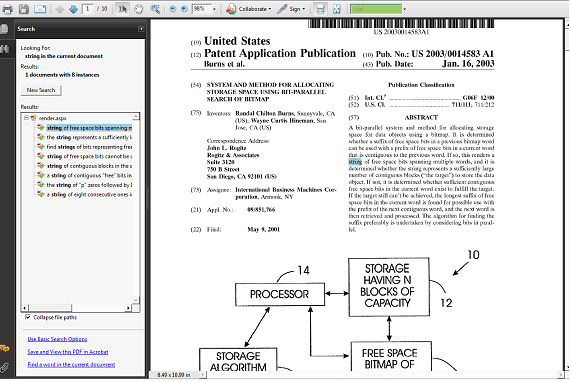
This is achieved by replacing the Part 1 block coder with an innovative block coder for today's vectorized computing architectures. The resulting HTJ2K system retains JPEG 2000's advanced features, with reduced quality scalability, while being faster and much more efficient than traditional JPEG. Part 15 speeds-up JPEG 2000 by an order of magnitude at the expense of slightly reduced coding efficiency. Part 14 specifies an XML representation of the JPEG 2000 file format and marker segments, along with methods to for accessing the internal data of a JPEG 2000 image. Part 13 define an entry-level encoder implementation of Part 1.

These extensions are backward compatible: decoders which implement Part 1 are able to skip the extensions defined in Part 11. More specifically, Part 11 extends the elements in the core coding system described in Part 1 with mechanisms for error protection and correction. Part 11 of the standard defines tools and methods to achieve the efficient transmission of JPEG 2000 imagery over an error-prone wireless network. Part 10 also adds support for wavelet decomposition structures that extend hierarchically in all three dimensions. It explicitly defines the notion of an extra spatial dimension (the Z-dimension), extending key JPEG 2000 concepts such as tiles, precincts and code-blocks to all three dimensions, so as to provide resolution- and region-of-interest accessibility properties in 3D.

Part 10 is the volumetric extension of JPEG 2000 Part 1. A primary focus for Part 9 is efficient and responsive interactive remote browsing of JPEG 2000 content conforming to any of the other parts of the standard. Part 9 defines tools for supporting incremental and selective access to imagery and metadata in a networked environment. Part 8 standardizes tools to ensure the security of transaction, protection of contents (IPR), and protection of technologies (IP), and to allow applications to generate, consume, and exchange JPEG 2000 secured bitstreams. Although it is a member of the JPEG 2000 family, it supports the use of many other coding or compression technologies, including JBIG2 and JPEG. JPM is an extension of the JP2 file format defined in Part 1. Part 6 defines the JPM file format for multi-page document imaging, which uses the Mixed Raster Content (MRC) model of ISO/IEC 16485. They are both available under open-source licenses. One is written in C and the other in Java. The implementations were developed alongside Part 1, and were used to test it.
#Jpeg image compression standards .pdf code
Part 5 consists of two source code packages that implement Part 1. The Part 4 test files include both bare codestreams and JP2 files. Part 4 specifies test procedures for both encoding and decoding processes defined in Part 1, including the definition of a set of decoder compliance classes. Part 3 defines a file format for motion sequences of JPEG 2000 images, where each image is coded as an independent JPEG 2000 codestream. The Part 2 JPX file format extends the Part 1 JP2 file format to allow: more comprehensive color space descriptions and HDR sample representations multiple codestreams composition, cropping, geometric transforms rich animations descriptive metadata and a rich metadata set for photographic imagery. Part 2 defines codestream and file format extensions including: multi-component transformations more flexible wavelet tranform kernels and decomposition structures alternate quantization schemes and non-linear point transforms. Part 1 also defines a basic file format called JP2, which allows metadata such as color space information and IP rights to be provided with a JPEG 2000 codestream. Part 1 defines the core of JPEG 2000: the syntax of a JPEG 2000 codestream and the necessary steps involved in decoding JPEG 2000 images, with informative guidance for encoders.

Below is the list of current parts that make up the complete JPEG 2000 suite of standards. JPEG 2000 refers to all parts of the standard.
#Jpeg image compression standards .pdf portable
The JPEG 2000 architecture lends itself to a wide range of uses from portable digital cameras through to advanced pre-press, medical imaging, geospatial and other key application domains.

The standard supports up to 16384 components, with dimensions running into the thousands of terapixels, and precisions as high as 38 bits/sample, with or without tiling, and with a variety of interchangeable data progressions and random access capabilities. Content can be coded once at any quality, up to lossless, but accessed and decoded at a potentially very large number of other qualities and resolutions and/or by region of interest, with no significant penalty in coding efficiency. JPEG 2000 is an image coding system that uses state-of-the-art compression techniques based on wavelet technology and offers an extremely high level of scalability and accessibility.


 0 kommentar(er)
0 kommentar(er)
